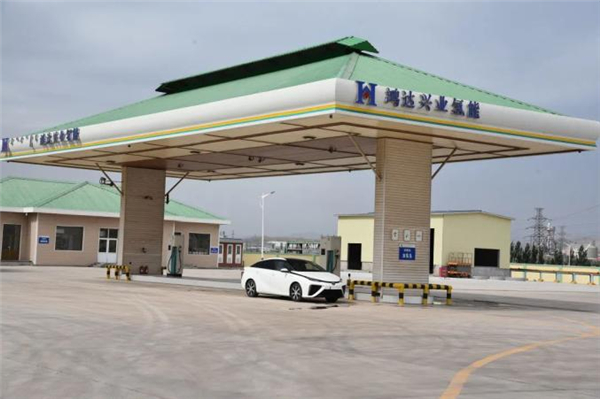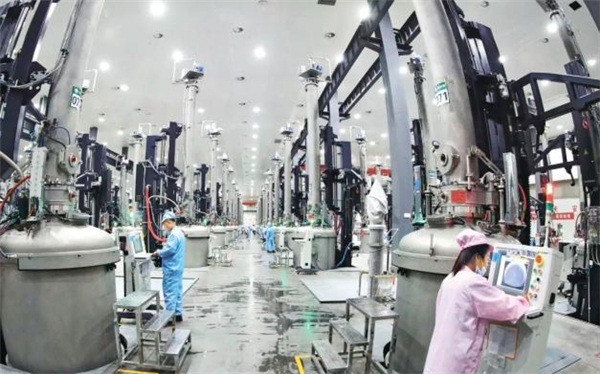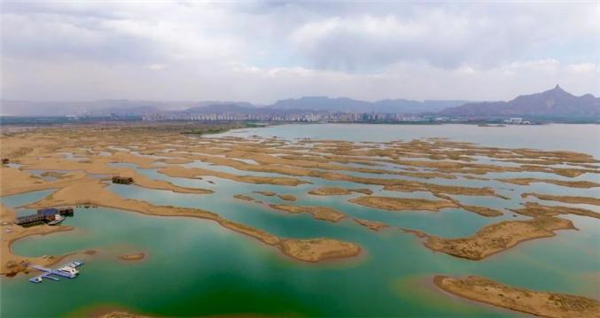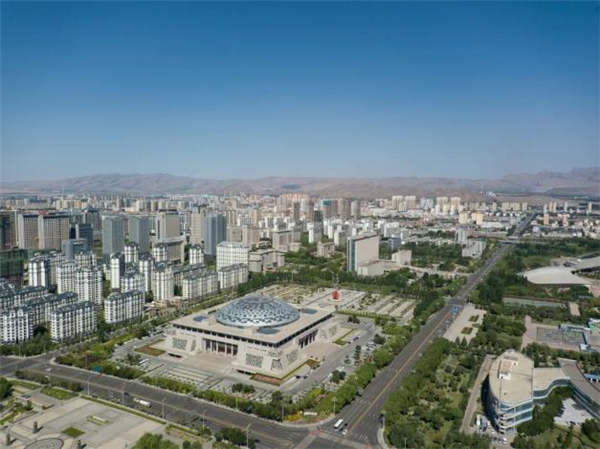Wuhai city: Industry transformation drives green development

The first hydrogen refueling station in North China's Inner Mongolia autonomous region is put into use in Wuhai city. [Photo by Hao Biao/Inner mongolia Daily]
Wuhai, a city that once rose up from its rich coal resources, has turned to the path of high-quality industry, with priority now given to eco-friendly development.
Over a 10-year period -- from 2012 to 2021-- the place once dubbed as the "Western Coal City" now has another brand, known instead as the "Desert Lake City".
In 2013, with the completion of the water storage project of the Yellow River Haibowan Water Control Project, a big lake appeared, turning Wuhai from a metropolis surrounded by deserts into a lush and green place with abundant water.
Today, the green coverage rate in the built-up areas has reached 43 percent and the per capita area of green space in the parks has reached 19.5 square meters.
Wuhai has also entered exalted ranks as a National Greening Model City, a National Garden City and a National Water Ecological Civilization City.

Workers get busy at a production plant in Wuhai. [Photo by Wang Chao/Inner Mongolia Daily]
To improve the quality of life and standard of living of its people, Wuhai has installed and renovated more than 900 kilometers of heating, water supply and drainage pipe networks. Moreover, the domestic sewage treatment rate, gas penetration and more eco-friendly domestic garbage treatment there have reached 98.3 percent, 97 percent and 100 percent, respectively.
Meanwhile, access to public transportation in agricultural areas has reached 100 percent.
Over a 10-year period, the area of old mines that have been treated in Wuhai has reached 42 square kilometers, the water and soil conservation treatment area has spanned 136 sq km and the water quality of the Wuhai section of the Yellow River now maintains Class II water bodies.
During the 13th Five-Year Plan period (2016-21), Wuhai invested a total of 7.78 billion yuan ($1.17 billion) in infrastructure. A raft of road and bridge projects -- such as the Wuhai Section of the Rongwu Expressway and the Yellow River Bridge of National Highway 110 -- was completed and opened, bringing up the total highway mileage of the city to 1,175 km.
In terms of its industrial development, the transformation and upgrading of traditional industries and the promotion of emerging industries have become the priority.

A sweeping aerial panorama of Wuhai Lake. [Photo by Wang Chao/Inner Mongolia Daily]
Wuhai has continued to promote energy conservation and emission reductions, as well as to eliminate and close outdated production capacity -- to force the coal chemicals industry to move towards high-end, value-added refinements and new materials.
Moreover, Wuhai has prioritized the development of such industries as the new energy, new materials and high-end equipment manufacturing sectors.
Data showed that since last year alone, Wuhai introduced and implemented 25 new energy chain projects with a total installed capacity of 3.86 million kilowatts, five degradable plastics industry projects with a total production capacity of 2.96 million metric tons and two silicone projects with a total production capacity of 95 million tons.
At present, the conversion rate of on-site coal processing in Wuhai exceeds 90 percent. To top it off, and the proportion of non-coal industries -- including new energy, new materials and equipment manufacturing -- in industrial added value has increased from 47.7 percent in 2010 to over 80 percent now.

Going places: A view from above of the urban landscape of Wuhai city. [Photo by Wang Chao/Inner Mongolia Daily]



 Print
Print Mail
Mail


